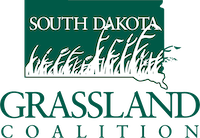The History of the Landscape
Often regarded as the father of wildlife management, Aldo Leopold quoted in his 1933 book Game Management “…game (wildlife) can be restored by the creative use of the same tools which have heretofore destroyed it – axe, cow, plow, fire, and gun”. As a Private Lands Wildlife Biologist (PLWB) working with the Bird Conservancy of the Rockies in South Dakota, knowing and understanding the teachings of Aldo Leopold is like knowing your ABCs. Now I will admit, it wasn’t always like this for me. I grew up in Maine, a state with more lobster than cattle, and I was never fully exposed to the world of rangelands. I never learned how grazing native grasslands can actually benefit wildlife. I was your typical first year wildlife student from Maine who was clueless about livestock and especially livestock as potential drivers of ecosystem health! Then I attended Mississippi State University to obtain my master’s degree in wildlife & fisheries, where I took a course titled “Principals and Practice of Conservation in Agricultural Landscapes”. One of my biggest takeaways from the course was remembering that to be an effective land manager, one must consider the history of the landscape, specifically the historic disturbance regime. In historic western South Dakota, most natural disturbances came from grazing bison, and fire. Today, livestock (largely cattle ranching) and prescribed fire fill that ecological role. By appropriately managing disturbance on the land, we can maintain and strengthen healthy grasslands and provide habitat and resources for a variety of wildlife species. Conversely, poor grazing and land management techniques can have catastrophic effects on our natural resources.




